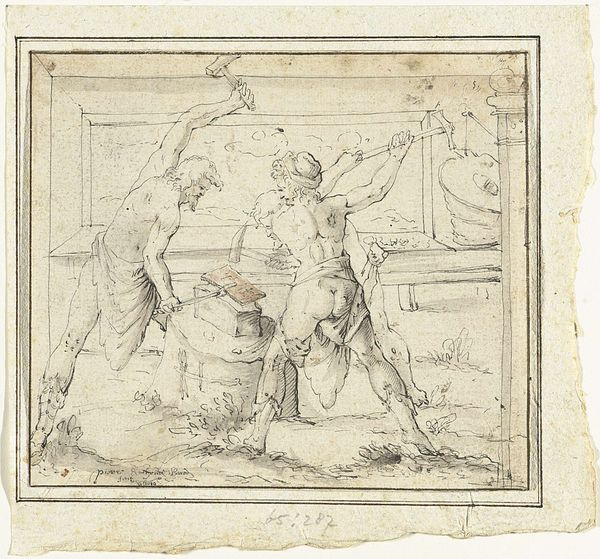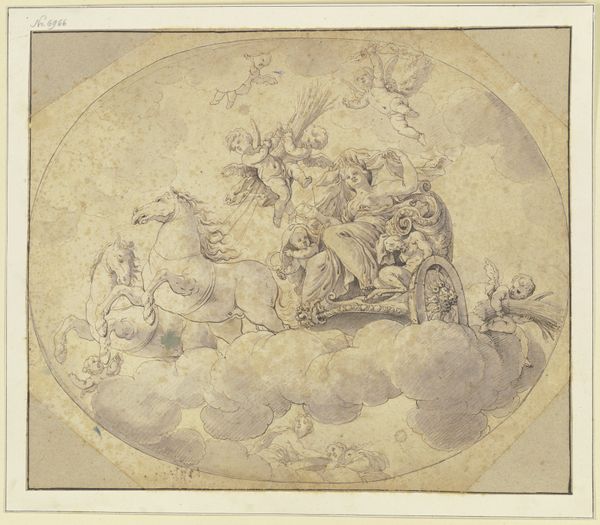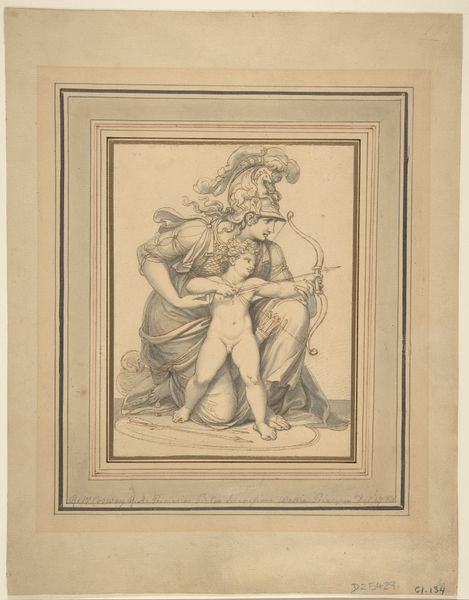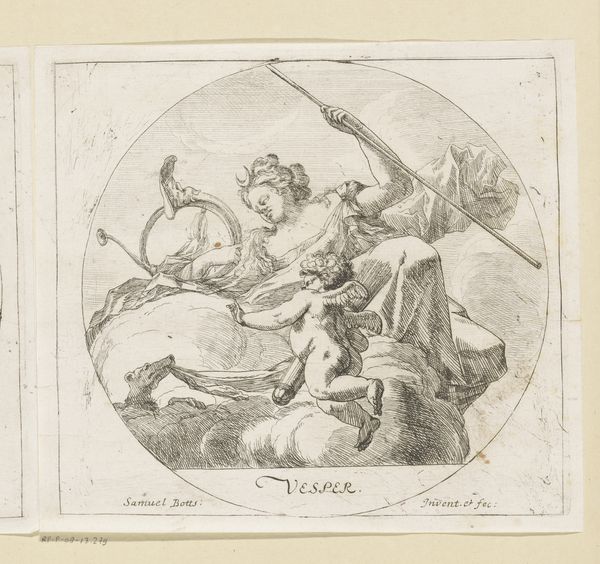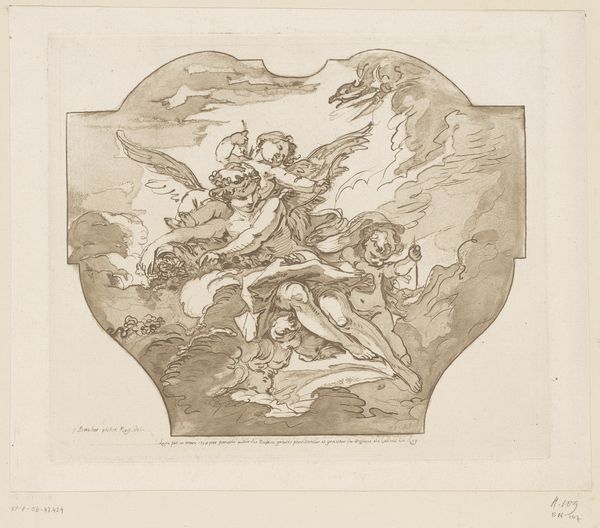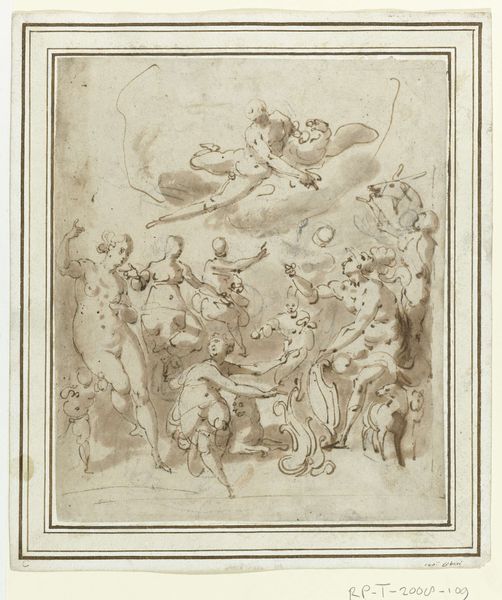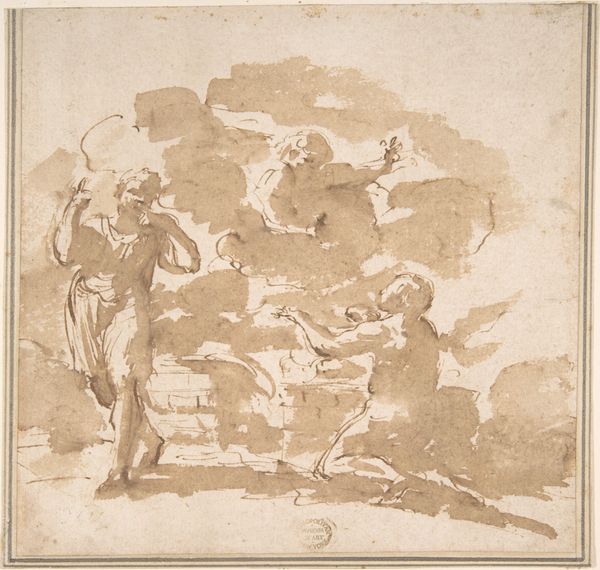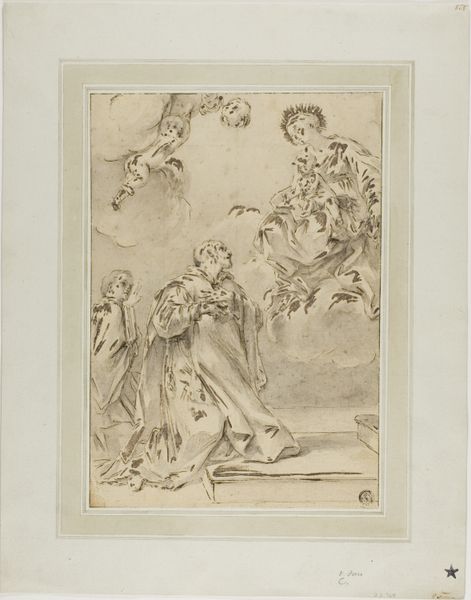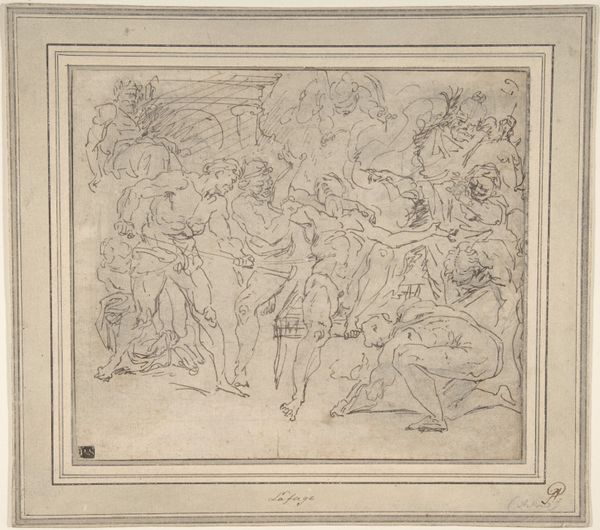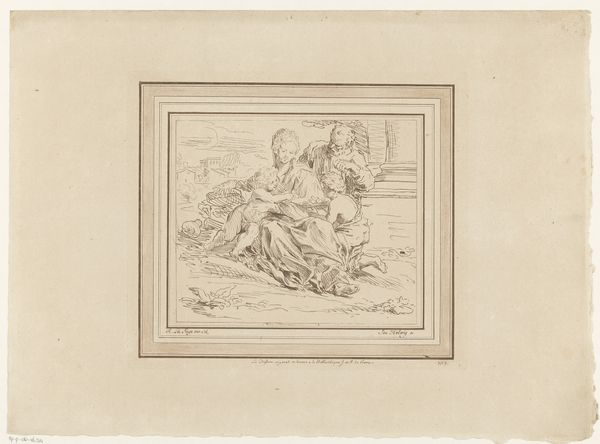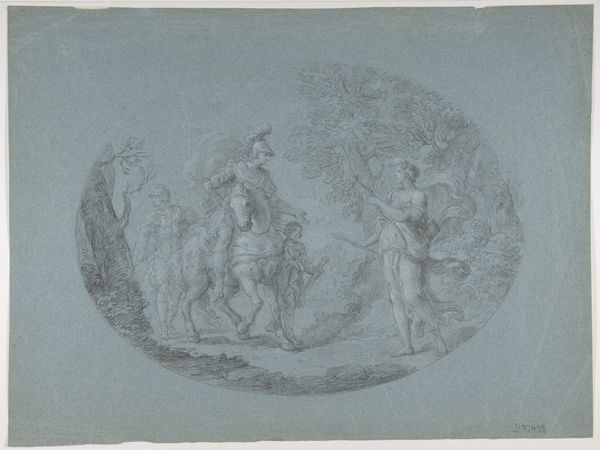
drawing, paper, ink
#
drawing
#
allegory
#
baroque
#
figuration
#
paper
#
ink
#
history-painting
Dimensions: height 184 mm, width 190 mm
Copyright: Rijks Museum: Open Domain
Jacob de Wit rendered this pen and brown ink drawing, "Twee putti met medaillon, waarin de verschijning van Apollo aan de muze" in the first half of the 18th century. De Wit was working in a Dutch society that embraced the opulence and mythological themes common in French art. Here, two putti, or cherubic boys, flank a medallion depicting Apollo appearing to a muse. This scene is brimming with power dynamics. Apollo, a male god, descends from the heavens to inspire a female muse, who waits below. This reflects a societal hierarchy where male genius was seen as an active force, “bestowing” creativity upon a passive, female recipient. The putti are holding the medallion up, actively framing the muse as an object to be observed. De Wit, like many artists of his time, walked a fine line. Commissioned to create beauty, they also participated in perpetuating the accepted gender roles of the time. The drawing leaves me pondering: Can we appreciate the skill while acknowledging the underlying assumptions about gender and creativity?
Comments
No comments
Be the first to comment and join the conversation on the ultimate creative platform.
